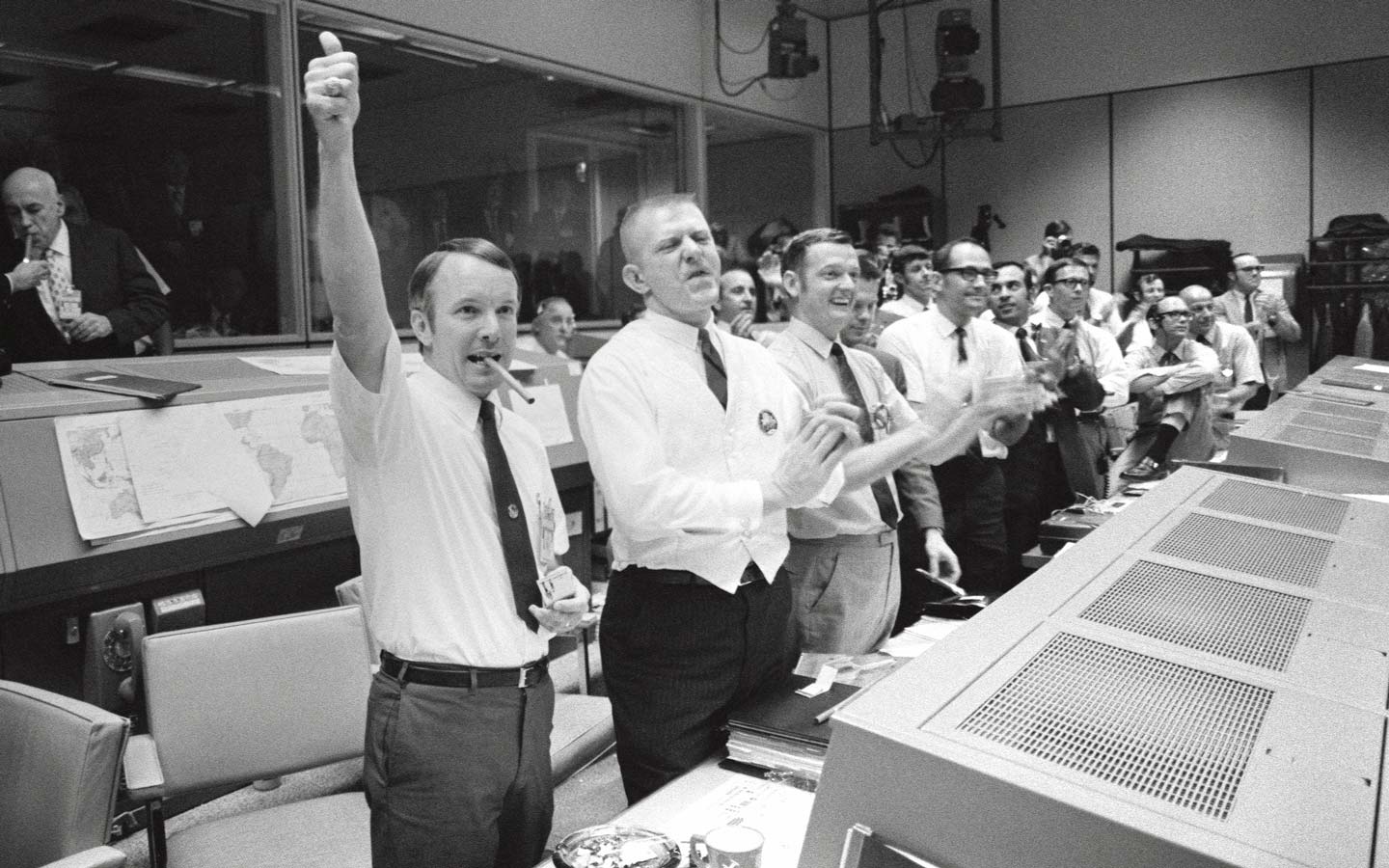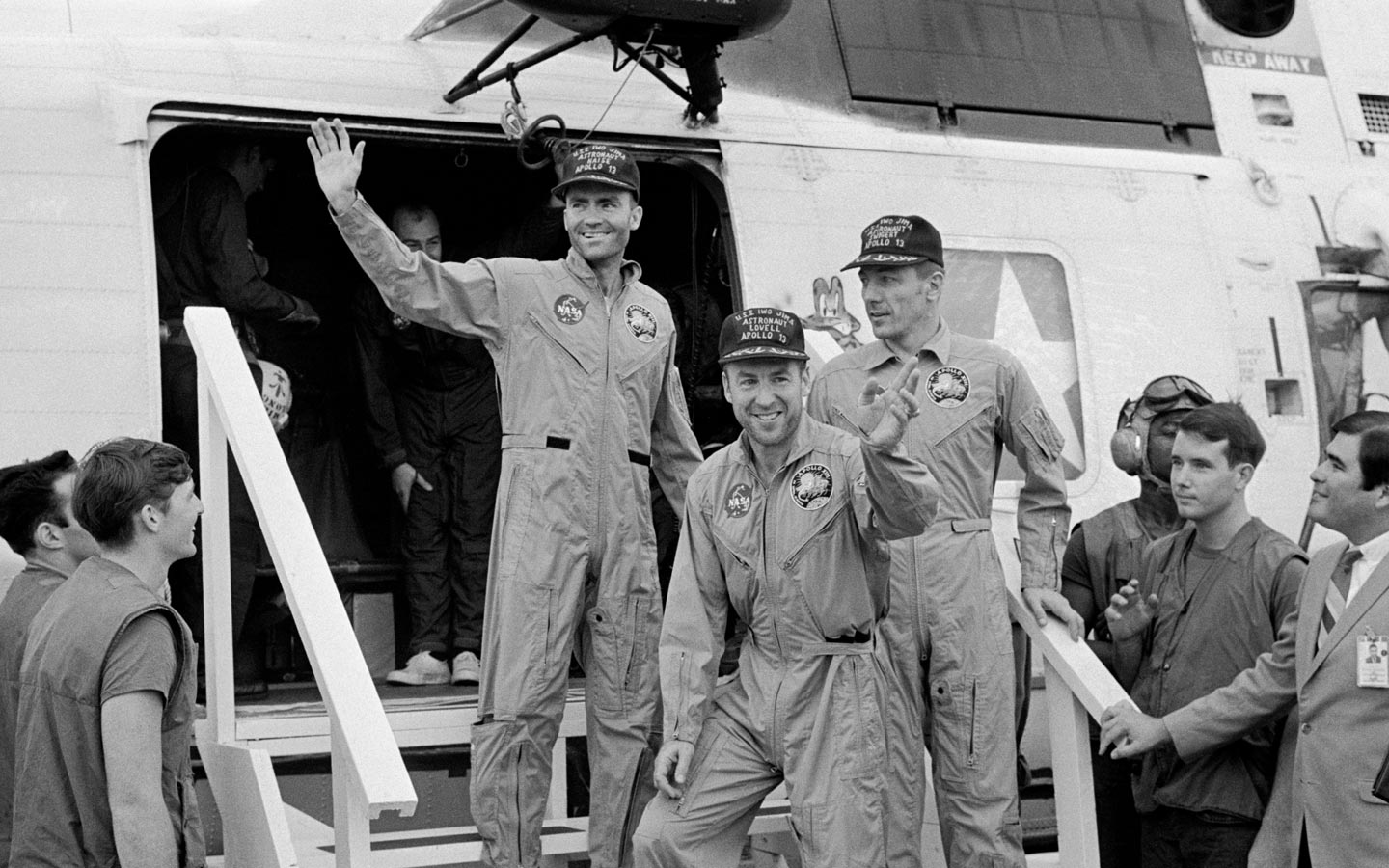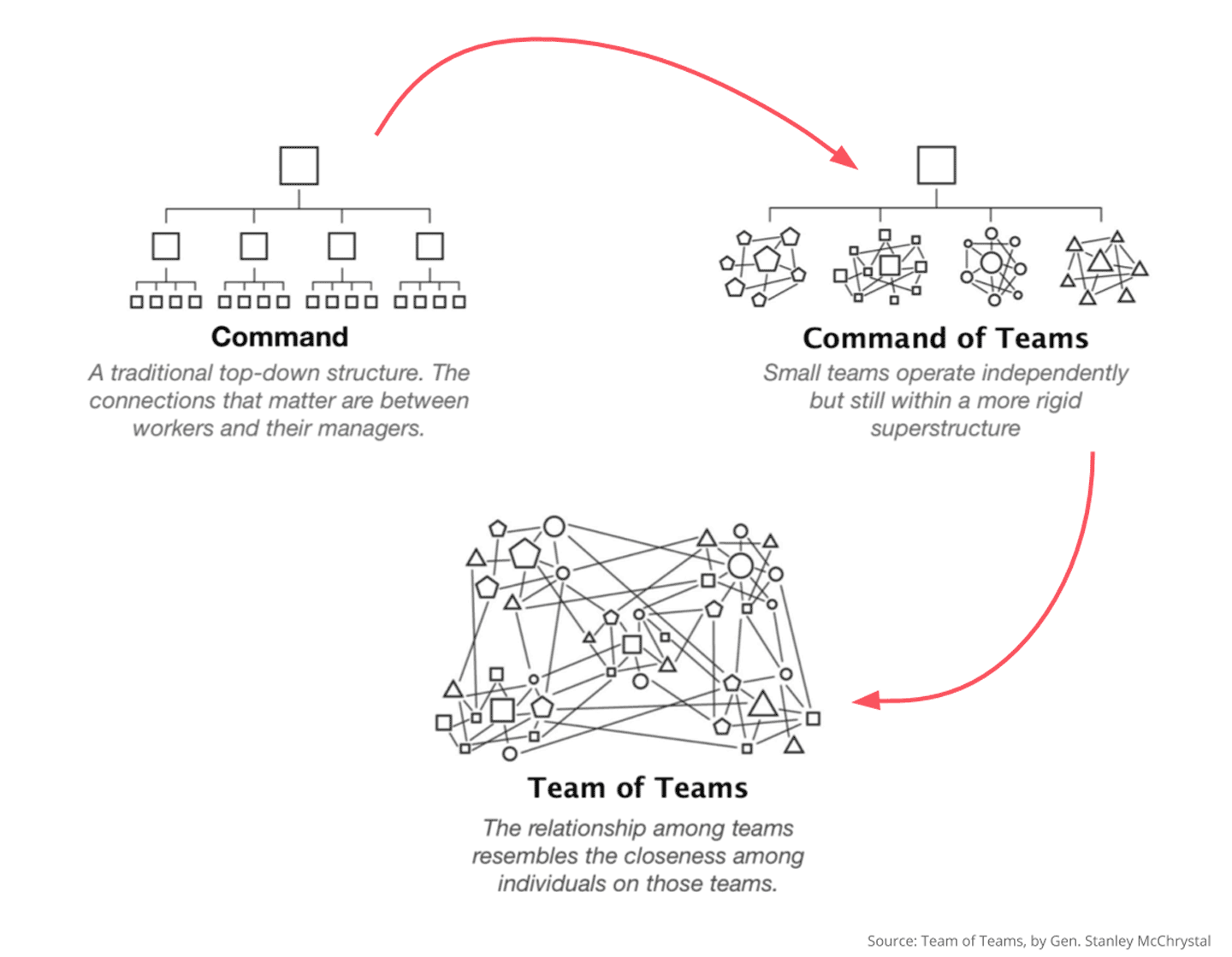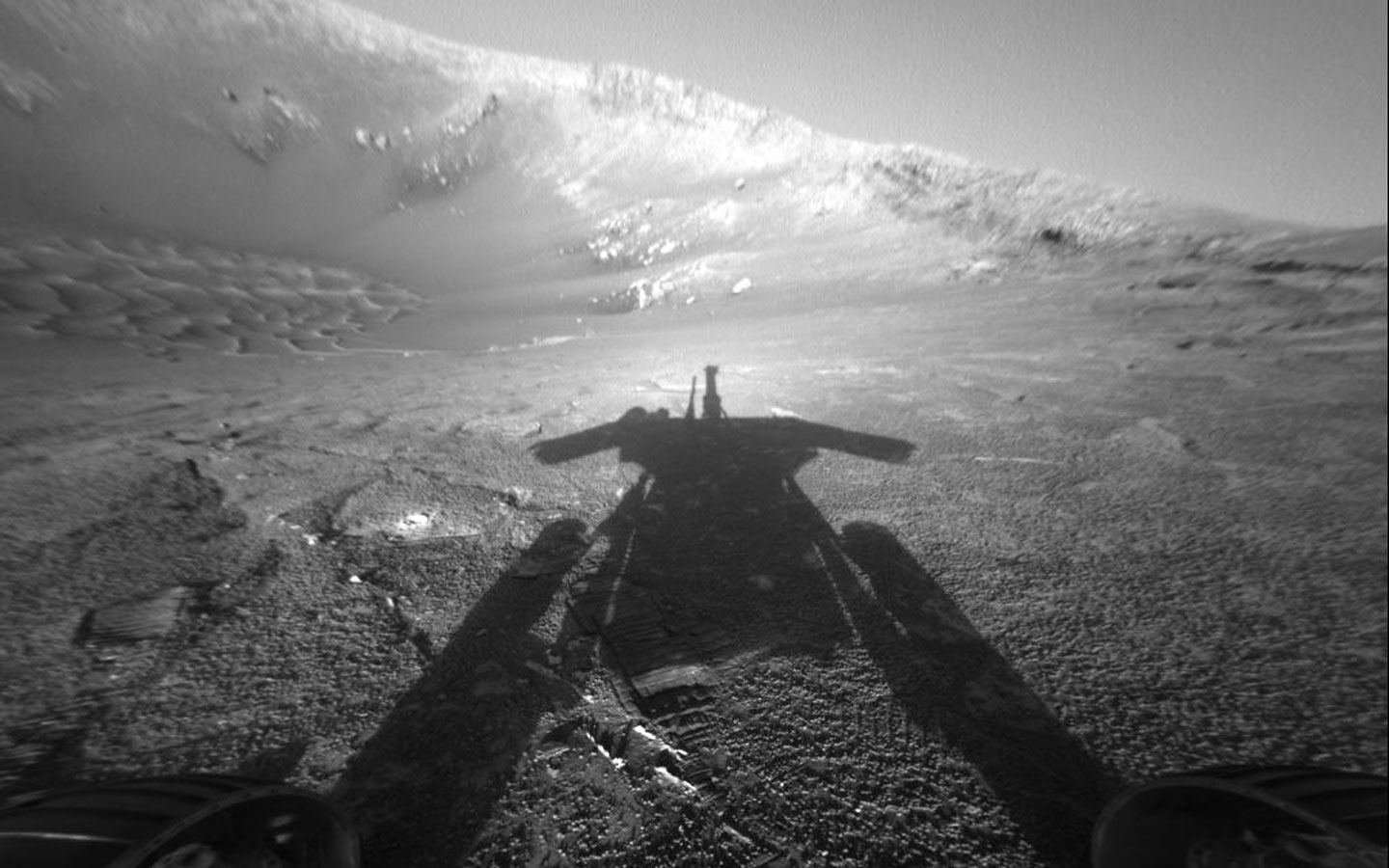How NASA teams work: Practical lessons from space missions

“I will stand behind every decision you make. We came into the room as a team and we’ll go out as a team.”
— Gene Kranz, former NASA Flight Director
“Okay, Houston – I believe we’ve had a problem here.”
These were the famous words of Jack Swigert, a member of the Apollo 13 crew alongside Jim Lovell and Fred Haise. The mission launched on April 11, 1970, and was supposed to be NASA's third Moon landing. Earlier in the day at mission control in Houston, capsule communicator Joe Kerwin had reported that the spacecraft was “in real good shape”, and joked that they were “bored to tears down here.”
Hours later, the entire spacecraft was shuddering around the startled crew. Alarm lights lit up in Odyssey and in Mission Control as oxygen pressure fell and power disappeared.
Learning from success
Apollo 13
Over several days that followed the accident, mission controllers worked around the clock to get the Apollo 13 crew home, grabbing a few minutes of sleep under their desks when they could. Among many problems that needed to be solved was how to separate the lunar module from the command module before reentry. A team of six engineers from the University of Toronto was formed and given a mere 6 hours to come up with a solution. Their calculations were relayed to NASA and from there to the astronauts, who were able to successfully apply them.
“It was a collaboration, a tale of two groups,” said Lovell in an interview with BBC. “One in a comfortable control room with hot coffee and cigarettes – that had to come up with the ideas to get us back… and the second group in a cold, damp spacecraft to correctly execute those decisions.”

On 17 April, the Apollo 13 capsule descended through the clouds on its three parachutes to splash down in the Pacific. After celebratory cigars were handed around the control room, the exhausted team finally headed home to sleep.
The 87 hours between the explosion and splash-down were an amazing display of teamwork between NASA’s Houston team and the flight crew members – and a perfect illustration of the saying, “it is amazing what can be accomplished when no one cares who gets the credit.” Countless lessons can be learned from their experience and applied to areas far beyond space exploration.
Lessons learned:
Form your A-team and trust it.
“It really was a triumph in the way people handled a crisis: good leadership at all levels at NASA, teamwork that was generated because of that leadership, the use of imagination to figure out how to get us home by using just what we had on board.”
— Jim Lovell, Commander of Apollo 13
Committed and highly energized members are a crucial ingredient of a solution-oriented team, and it can only be achieved by a leader who trusts the judgment of the people who are working for him. Flight Commander Jim Lovell’s vision and Flight Director Gene Kranz’s ability to lead (rather than manage), was what mobilized the team to bear the pressure and do what needed to be done. Everyone was treated as an expert in some sphere, and each placed the utmost confidence in his peers.
Communicate and build chemistry.
“Team chemistry amplifies the individual’s talents as well as the team’s talent. Chemistry leads to communication that is virtually intuitive, because we must know when the person next to us needs help, a few more seconds to come up with an answer.”
— Gene Kranz, former NASA Flight Director
Apollo's team of project managers went from managing small projects with a select team of close colleagues to managing thousands of people. Coordinating such a massive effort required effective communication and a culture of openness. The team instituted weekly meetings to provide feedback and hear suggestions from everyone in his division, ignoring hierarchy. At no point was any team in the dark about what another group was doing, or what support they needed.
Keep the ego in check.
“Many of us came in from aircraft flight testing, and our egos were much bigger than this auditorium. It was tough to get people to work together, but we knew that success would only come as a team, so we became one, and we learned to check our egos at the door.”
— Gene Kranz, former NASA Flight Director
There were no egos – only communicative problem-solving. Gene Kranz knew that his team was his most valuable asset and if he wanted them to excel he needed to abandon the traditional command-and-control management style and adopt a collaborative, open leadership approach that engaged and empowered the people around him – a concept often referred to as a “flat army”.
Apollo 11
While Apollo 13 was one of the most shining examples of teamwork done right, when talking about successful NASA missions it's impossible to leave out its predecessor Apollo 11.

In the early 1960s, NASA was losing the Space Race: the Soviet Union had already produced the first Earth orbiter, the first animal in orbit, the first lunar flyby, and the first lunar impact. President John F. Kennedy's declaration that by the end of the decade the US will have put the first man on the Moon was met with skepticism and laughter.
Leading the project was the legendary Wernher von Braun, but it was George Mueller who revolutionized NASA’s organization, making the mission possible. Gen. Stanley McChrystal wrote about the tremendous impact Mueller's organizational changes had on NASA in his best-selling book Team of Teams.
NASA originally started off as a research project with many different teams working on their own independent projects. The teams were largely confined to their own silos, with little cross-communication aside from monthly meetings between a handful of top-level managers.

Mueller was brought in to shake things up. In order to create a sense of “shared consciousness” among the different teams, he insisted on setting up a “teleservices network” that connected all labs, manufacturers, and test sites through easily accessible computer data and teleconferences. It did wonders for building trust and ensuring that information flowed freely.
What Mueller built at NASA would later be known as “systems thinking,” which was a significant departure from the traditional “cog in a wheel” reductionist approach. In the end, it was what allowed NASA to transform from a disconnected pack of competitive employees into a single, unified team – a team that effectively ended the Space Race.
Lessons learned:
Empower cross-functional teams.
“One of the real challenges, of course, was trying to get them all working on the same program at the same time. That was why I organized it the way I did at the beginning of the program.”
— George Mueller, former NASA Associate Administrator
One of the first things Mueller did was form cross-functional teams. Responsibilities became blended and overlapped, replacing previously well-defined positions, with some engineers taking up executive management roles related to policy, administration, and finance. Teams were made a lot more self-sufficient and productive without the need for constant approvals or handoffs.
Don't be afraid to delegate.
“Another thing that was extraordinary was how things were delegated down. NASA responsibilities were delegated to people who didn’t know how to do these things, and were expected to go find out how to do it.”
— Bill Tindall, former NASA Mission Technique Coordinator
Apollo project managers actively encouraged delegating to people who don't have experience. In fact, the average age of the entire Operations team was just 26, most fresh out of college. NASA gave someone a problem and the freedom to run with it, and that trust paid off.
Record lessons learned.
“When we had a fire, we took a step back and said okay, what lessons have we learned from this horrible tragedy? Now let’s be doubly sure that we are going to do it right the next time. I think that fact right there is what allowed us to get Apollo done in the ‘60s.”
— Christopher C. Kraft Jr., former NASA Director of Flight Operations
The Apollo program was home to some of the most brilliant minds in the world, and yet no one was shy about their mistakes. Documenting errors and learning from them became the central part of the process, from the very top of the organization down.
Learning from failure
Mars missions
Learning from failure is just as (or, arguably, more) important than learning from success. The three failed NASA Mars missions – the Mars Climate Orbiter, Mars Polar Lander, and Deep Space 2 – are good examples of that. While engineering errors caused the failures, it was poor management and communication between teams that prevented them from detecting and correcting them.

In case of the Mars Climate Orbiter, it was an embarrassing metric mishap: the flight system software took thrust instructions using the metric unit newtons, while the software on the ground that generated those instructions used the Imperial measure, pound-force. The failure of the Mars Polar Lander took place only two and a half months later – according to Thomas Young, chairman of the Mars Program Independent Assessment Team, the project “was under-funded by at least 30%” and was managed poorly. A postmortem of the Deep Space 2 failure revealed that the engineers abandoned a complete system impact test midway through the project based on schedule considerations.
Much of the blame for those failures was placed on the agency’s Faster, Better, Cheaper (FBC) initiative, a program established in the early 1990s. It aimed to significantly cut project costs while speeding development times. Project managers were expected to learn from NASA’s collective experiences, adopt what worked, and jettison what didn’t.
Lessons learned:
Mission success comes first.
“[Mission Success First] represents a fourth element of the Faster, Better, Cheaper approach, and that is, doing our work smarter. It means picking the right people, giving them the right resources, infusing the right technology, holding the right people accountable, and doing the right kind of risk management.”
— Dan Goldin, former NASA Administrator
Shifting to FBC from a slow and reliable but costly approach to development meant that NASA project managers were forced to invent radically new processes and procedures. People were trying to do too much with too little and couldn’t capture all the potential lessons from one mission before moving to the next. By the time it was clear that the bar was set too high the project pipeline was full of missions that were potentially compromised.
If you see something, say something.
“The problem here was not the error; it was the failure of NASA's systems engineering, and the checks and balances in our processes, to detect the error. That's why we lost the spacecraft.”
— Edward Weiler, former NASA Associate Administrator for Space Science
It's critically important to create an environment where your team members are encouraged to challenge each other, as well as the management. The discrepancy between the calculated and measured position of the Mars Climate Orbiter had been noticed by at least two navigators, whose concerns ended up being dismissed because they did not follow the rules about filling out the form to document their concerns. As Charles Whetsel, Chief Engineer at NASA's Mars Exploration Program, puts it, “The people you really want on your team are the ones who are really bothered by things like 'Why does that telemetry point always read a little different from those other ones? Is that trying to tell me something?'”
Implement knowledge sharing initiatives.
“In a complex system like a spacecraft, about a million little things have to happen right. The real complex stuff everyone is watching. It's the things that you've done many times that you think you know how to do. Somehow, that's the thing that bites you.”
— Matt Landano, former Director of Office of Safety and Mission Success at NASA Jet Propulsion Laboratory
The FBC initiative depended to a large extent on shared learning and required an aggressive and systematic approach to knowledge management. Although NASA had implemented a Lessons Learned System in 1995, a 2001 survey found that only 25% of its managers contributed to it. Another quarter of managers were not even aware that the system existed.
Institutionalize postmortems.
“The mentality became, 'We flew it, we had a problem, we landed, so what's the big deal? So there was a crack in the wing panel, but hey, we got away with it; when's the next mission?'”
— Henry McDonald, former Director of NASA California
Success doesn't indicate a flawless process just as failure is not always a result of egregious bad practice. As many mistakes could have been made in the celebrated 1997 Pathfinder mission as were made in the failed 1999 Polar Lander mission. For a long time, NASA fell prey to “superstitious learning” – only conducting detailed postmortems on its failed missions and missing the opportunity to identify problems in its successful projects that might have helped avoid later failures.
NASA made several large-scale changes after that. Several planned missions, including a mission that was to bring Mars rocks back to Earth (provisionally named simply Mars Sample-Return), were scrapped. The space agency went back to basics, reviewing and rebuilding its Mars program based on tested conservative strategies and putting the lessons learned into practice.
The efforts paid off, with the fantastically successful Mars Exploration Rovers, Spirit, Opportunity, and Curiosity.

From the day Opportunity landed on Mars, a team of mission engineers, rover drivers, and scientists on Earth collaborated to keep the rover going, and instead of just 90 Martian days (about 40 minutes longer than an Earth day), Opportunity lasted 5,111, recently concluding its mission. Its final venture brought it to the western limb of Perseverance Valley.
“I cannot think of a more appropriate place for Opportunity to endure on the surface of Mars than one called Perseverance Valley,” said Michael Watkins, director of JPL. “The records, discoveries, and sheer tenacity of this intrepid little rover is testament to the ingenuity, dedication, and perseverance of the people who built and guided her.”